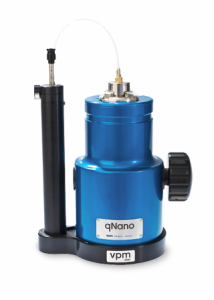The American Association for the Advancement of Science (AAAS) lists a notice posted Jan. 5, 2015 for 30+ PhD studentships in the field of nanotechnology available in New Zealand. The posting comes from New Zealand’s McDiarmid Institute for Advanced Materials and Nanotechnology on its ‘studentship’ webpage (Note: A link has been removed),
The MacDiarmid Institute for Advanced Materials and Nanotechnology is New Zealand’s premier research organisation concerned with high quality research and research education in materials science and nanotechnology.
30+ PhD studentships are now open across our research areas and partnership institutions.
Successful candidates will be a member of the MacDiarmid Institute, a national Centre of Research Excellence which provides collaborative opportunities and a thriving environment to work in.
Each scholarship is worth NZD$27,000 per annum (not taxed) and includes all student fees.
Come to New Zealand to enjoy the best of life and science!
For more details on specific projects, deadlines, etc – contact the appropriate MacDiarmid Institute investigator from the list below.
Look out for 6 Postdoctoral Fellowships to be advertised soon.
To give you a sense of the possibilities I have excerpted a few of the studentship descriptions (Note: formatting has been changed and links removed),
Professor Kevin E. Smith
Head, School of Chemical Sciences
University of Auckland
kevin.smith@auckland.ac.nzSynchrotron Radiation X-Ray Spectroscopic Studies of Functional Metal Oxides
The available Ph.D. project involves the experimental study of the electronic structure of transition metal oxides using a suite of synchrotron radiation-based spectroscopies.
…
Professor Jadranka Travas-Sejdic
The University of Auckland(School of Chemical Sciences)
j.travas-sejdic@auckland.ac.nz2D and 3D conducting polymer structures to interrogate and sense biological cells.
The PhD project will be highly cross-disciplinary involving materials chemistry, microfabrication of conducting polymer structures and their interaction with biological cells.
The PhD will be enrolled at UoA but the project will be highly collaborative between The University of Auckland and the University of Canterbury.
…
Dr Geoff Willmott
The University of Auckland
g.willmott@auckland.ac.nzNew Tools for Soft Nanomechanics: Nanoaspiration
We have a growing capability in nanofluidics, an emerging field which aims to understand the physics and chemistry of soft nanomaterials, and of fluidic transport in confined spaces.
…
Dr Duncan McGillivray
d.mcgillivray@auckland.ac.nz
The University of AucklandBiologicaly patterning of surfaces
A PhD scholarship in chemistry is offered for research into biological patterning of surfaces based at the School of Chemical Sciences at the University of Auckland.
…
Dr Shane Telfer
Massey University, Palmerston North
s.telfer@massey.ac.nzMetal-organic frameworks (MOFs) are an exciting class of porous materials with a raft of applications.
The project will focus on the design, synthesis, and characterisation of MOFs for gas storage and separations. Novel spectroscopic techniques will be employed to gain insight into the MOF structure and functional properties.
Good luck to all the applicants!
